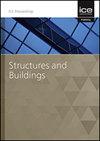The climate is right for a fundamental change in civil engineering education
IF 1.4
4区 工程技术
Q3 CONSTRUCTION & BUILDING TECHNOLOGY
Proceedings of the Institution of Civil Engineers-Structures and Buildings
Pub Date : 2022-10-10
DOI:10.1680/jstbu.21.00149
引用次数: 0
Abstract
Since the industrial revolution, civil engineers who have created a built environment for a civilisation that is based on fossil fuel have been admired. For over 250 years engineers have been educated and trained for the ‘upslope’ of using ever more carbon to fuel engineering needs. But now there is an urgent requirement to enter an era which is an order of magnitude shorter, and which is on the steep ‘downslope’ towards net-zero carbon by 2050, or earlier. The difference between what it means to be an engineer on the ‘upslope’ and what it means to be engineer on the ‘downslope’ is colossally different. The first step for all educators is to realise this, to embrace it, and to be part of the solution by instilling a ‘downslope’ mentality in engineering students. Recently, the Joint Board of Moderators (JBM) has reviewed and updated its guidelines for universities. It has placed the climate emergency central to the education of future civil engineers. This paper describes the background to, and details of, the changes which have been made by JBM. Given that creativity is enhanced further through these additional challenges, what could possibly be more exciting for engineering students of today than knowing that they will lead the profession in achieving massive reductions in emissions, to the benefit of all humanity? The JBM, and society, require of civil engineering education that this ambition is fulfilled.土木工程教育发生根本性变化的大环境是合适的
自工业革命以来,为以化石燃料为基础的文明创造了建筑环境的土木工程师一直受到人们的钦佩。250多年来,工程师们一直在接受教育和培训,以应对使用越来越多的碳来满足工程需求的“上坡”。但现在迫切需要进入一个短一个数量级的时代,一个到2050年或更早实现净零碳排放的“陡坡”时代。“上坡”的工程师和“下坡”的工程师之间的差别是巨大的。所有教育工作者的第一步是意识到这一点,接受它,并通过向工科学生灌输“走下坡路”的心态,成为解决方案的一部分。最近,联合版主委员会(JBM)审查并更新了其大学指导方针。它将气候紧急情况置于未来土木工程师教育的中心位置。本文描述了JBM所做的改变的背景和细节。考虑到创造力通过这些额外的挑战得到了进一步的增强,对于今天的工程专业学生来说,还有什么比知道他们将领导这个行业实现大规模减排、造福全人类更令人兴奋的呢?JBM和社会都要求土木工程教育实现这一目标。
本文章由计算机程序翻译,如有差异,请以英文原文为准。
求助全文
约1分钟内获得全文
求助全文
来源期刊
CiteScore
3.40
自引率
6.20%
发文量
61
审稿时长
12 months
期刊介绍:
Structures and Buildings publishes peer-reviewed papers on the design and construction of civil engineering structures and the applied research associated with such activities. Topics include the design, strength, durability and behaviour of structural components and systems.
Topics covered: energy conservation, people movement within and around buildings, strength and durability of steel and concrete structural components, and the behaviour of building and bridge components and systems

 求助内容:
求助内容: 应助结果提醒方式:
应助结果提醒方式:


